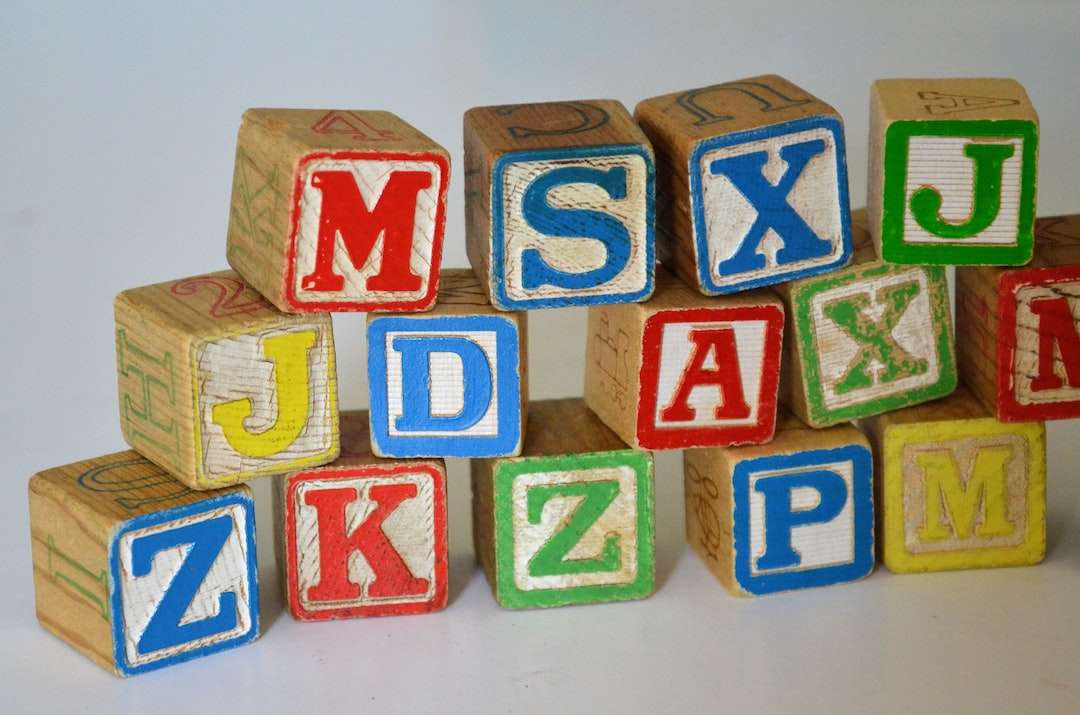Education Symbolism – The A to Z Guide

Education symbolism refers to the use of symbols in teaching and learning. Symbols are visual representations that convey meaning and can be used to enhance understanding and communication in educational settings. They can take the form of images, signs, or gestures that represent concepts, ideas, or objects. Education symbolism plays a crucial role in teaching and learning as it helps students make connections, remember information, and engage with the material.
Symbols are powerful tools in education because they have the ability to enhance learning and retention. When students are presented with visual representations of concepts or ideas, it helps them make connections and understand the material more easily. For example, using symbols to represent mathematical operations can help students visualize the process and remember it more effectively. Symbols also aid in memory retention as they provide a visual cue that can trigger recall of information. By incorporating symbols into teaching and learning, educators can create a more engaging and effective learning experience for their students.
The Importance of Symbols in Education
Symbols play a crucial role in communication and understanding in educational settings. They serve as a common language that can be understood by individuals from different backgrounds and cultures. For example, using symbols to represent emotions or actions can help bridge language barriers and facilitate communication between students who speak different languages. Symbols also aid in understanding complex concepts by simplifying them into visual representations that are easier to comprehend. This is particularly beneficial for students who struggle with abstract or complex ideas.
Symbols also have the power to evoke emotions and create a sense of connection and identity within educational communities. For example, school mascots or logos can instill a sense of pride and belonging among students, creating a positive school culture. Symbols can also be used to convey values and beliefs, helping to shape the identity of an educational institution. By using symbols effectively, educators can create a shared understanding and foster a sense of community among students.
A Brief History of Education Symbolism
The use of symbols in education has a long history that dates back to ancient civilizations. In ancient Egypt, hieroglyphics were used as a form of written communication and education. These symbols represented words, sounds, and ideas, and were used to teach reading and writing. Similarly, in ancient China, characters were used to represent words and concepts, forming the basis of the Chinese writing system.
Over time, education symbolism has evolved and adapted to different cultures and contexts. In the Middle Ages, illuminated manuscripts were used to convey religious teachings and knowledge. These manuscripts were adorned with intricate symbols and illustrations that helped convey complex ideas to illiterate individuals. In the 19th century, the development of standardized symbols for scientific disciplines such as chemistry and physics helped facilitate the teaching and learning of these subjects.
Common Symbols Used in Education
There are numerous symbols commonly used in education that have specific meanings and significance. Some examples include:
1. The Apple: The apple is often used as a symbol of knowledge and learning. It is derived from the biblical story of Adam and Eve, where the apple represents the forbidden fruit from the Tree of Knowledge.
2. The Graduation Cap: The graduation cap, also known as a mortarboard, is a symbol of academic achievement and completion. It is worn during graduation ceremonies to signify the completion of a degree or program.
3. The Book: The book is a universal symbol of knowledge and learning. It represents the accumulation of knowledge and serves as a tool for education.
4. The Globe: The globe is a symbol of global awareness and understanding. It represents the interconnectedness of the world and the importance of global perspectives in education.
5. The Pencil: The pencil is a symbol of creativity and learning. It represents the act of writing and drawing, which are essential skills in education.
These symbols are widely recognized and understood within educational contexts, making them effective tools for communication and understanding.
Symbolism in Different Educational Settings
Symbols are used in different ways across various educational settings, including primary, secondary, and tertiary education.
In primary education, symbols are often used to introduce and reinforce basic concepts. For example, using pictures or symbols to represent numbers or letters can help young children develop early literacy and numeracy skills. Symbols are also used to create a visually stimulating and engaging learning environment, with colorful posters and charts that represent different topics or themes.
In secondary education, symbols are used to convey more complex ideas and concepts. For example, in science classes, symbols are used to represent elements and compounds, making it easier for students to understand and remember them. Symbols are also used in subjects such as history and geography to represent events, locations, or ideas.
In tertiary education, symbols are used to represent academic disciplines and areas of study. For example, the caduceus is a symbol commonly associated with the medical profession, while the scales of justice are a symbol of law and justice. Symbols are also used to represent different departments or faculties within universities, creating a sense of identity and belonging among students.
The Role of Symbolism in Curriculum Design

Symbols play a crucial role in curriculum design as they help organize and structure the learning experience for students. By using symbols to represent different topics or themes, educators can create a visual roadmap that guides students through the curriculum. This helps students make connections between different concepts and understand how they relate to each other.
Symbols also have an impact on student engagement and motivation. When students can visually see their progress through the curriculum, it provides them with a sense of accomplishment and motivates them to continue learning. Symbols can also be used to set goals and track progress, providing students with a visual representation of their achievements.
In addition, symbols can be used to differentiate instruction and cater to the diverse needs of students. By using symbols to represent different levels of difficulty or complexity, educators can provide students with options and choices that suit their individual learning styles and abilities.
The Use of Symbols in Teaching and Learning
Symbols are widely used in teaching and learning as they have numerous benefits for both educators and students. Some of the ways symbols are used include:
1. Visual Aids: Symbols are used as visual aids to enhance understanding and retention of information. For example, using diagrams or charts to represent complex processes or concepts can help students visualize the material and remember it more effectively.
2. Mnemonics: Symbols are used as mnemonic devices to aid in memory retention. For example, using symbols to represent key points or ideas can help students remember them more easily.
3. Communication: Symbols are used to facilitate communication between educators and students. For example, using symbols to represent emotions or actions can help students express themselves and communicate their needs or concerns.
4. Engagement: Symbols are used to engage students and make the learning experience more enjoyable. For example, using symbols in games or interactive activities can motivate students to participate and actively engage with the material.
5. Differentiation: Symbols are used to differentiate instruction and cater to the diverse needs of students. For example, using symbols to represent different levels of difficulty or complexity can provide students with options and choices that suit their individual learning styles and abilities.
Symbolism in Educational Leadership and Management
Symbols play a crucial role in educational leadership and management as they help shape school culture and identity. School leaders often use symbols to convey values, beliefs, and expectations within the educational community. For example, school mascots or logos can represent the core values of the institution and create a sense of pride and belonging among students.
Symbols are also used to create a sense of unity and identity within educational communities. For example, school uniforms or colors can help create a sense of belonging and foster a positive school culture. Symbols can also be used to create a sense of hierarchy and authority within educational institutions. For example, the principal’s office or the school crest can represent the leadership and management of the school.
Symbols also have the power to inspire and motivate students and staff. For example, displaying symbols of achievement or success can create a culture of excellence and encourage students to strive for their best. Symbols can also be used to recognize and celebrate the achievements of students and staff, creating a positive and supportive learning environment.
The Influence of Culture on Education Symbolism
Culture plays a significant role in education symbolism as symbols can have different meanings and significance across different cultures. For example, the color red is often associated with luck and prosperity in Chinese culture, while it is associated with danger or warning in Western cultures. Therefore, symbols that are used in educational settings need to be culturally sensitive and appropriate.
Symbols also reflect the values, beliefs, and traditions of a particular culture. For example, in some cultures, the owl is seen as a symbol of wisdom and knowledge, while in others it is associated with darkness or evil. Therefore, when using symbols in education, it is important to consider the cultural context and ensure that they are respectful and inclusive.
Symbols can also be used to promote cultural diversity and understanding within educational communities. For example, using symbols from different cultures or incorporating multicultural perspectives into the curriculum can help students develop a global mindset and appreciate different cultures.
The Future of Education Symbolism: Trends and Innovations
The future of education symbolism is likely to be shaped by emerging trends and innovations in technology. With the advancement of digital tools and platforms, educators have access to a wide range of symbols and visual resources that can enhance teaching and learning. Virtual reality (VR) and augmented reality (AR) technologies have the potential to revolutionize education symbolism by creating immersive learning experiences that engage multiple senses.
In addition, the use of symbols in online and remote learning is likely to increase in the future. As more students engage in distance learning, symbols can help bridge the gap between educators and students by providing visual cues and representations of concepts or ideas. Symbols can also be used to create a sense of community and belonging in online learning environments.
Furthermore, the future of education symbolism is likely to be influenced by the growing emphasis on personalized learning. Symbols can be used to create personalized learning pathways that cater to the individual needs and interests of students. By using symbols to represent different learning options or pathways, educators can provide students with choices and flexibility in their learning journey.
Conclusion:
Education symbolism plays a crucial role in teaching and learning by enhancing understanding, communication, and engagement. Symbols are powerful tools that can help students make connections, remember information, and engage with the material. They are used in different educational settings and contexts to represent concepts, ideas, and objects. Symbols also play a significant role in educational leadership and management by shaping school culture and identity.
The future of education symbolism is likely to be shaped by emerging trends and innovations in technology. Virtual reality (VR) and augmented reality (AR) technologies have the potential to revolutionize education symbolism by creating immersive learning experiences. The use of symbols in online and remote learning is also likely to increase, as more students engage in distance learning. Furthermore, the growing emphasis on personalized learning is likely to influence the future of education symbolism, with symbols being used to create personalized learning pathways.
In conclusion, education symbolism is a powerful tool that has numerous benefits for teaching and learning. By incorporating symbols into educational practices, educators can create a more engaging and effective learning experience for their students. As technology continues to advance, the future of education symbolism holds great potential for innovation and improvement in teaching and learning.
If you’re interested in exploring the symbolism of different elements, you might also enjoy reading about the symbolism of the moon. The moon has long been associated with various meanings and interpretations, ranging from femininity and intuition to cycles and transformation. To delve deeper into this topic, check out this fascinating article on what the moon symbolizes. It offers a comprehensive guide to understanding the symbolic significance of this celestial body.
FAQs
What is education symbolism?
Education symbolism refers to the use of symbols to represent concepts, ideas, or values related to education. These symbols can be visual, such as logos or emblems, or they can be abstract, such as metaphors or allegories.
What are some common education symbols?
Some common education symbols include the apple, which represents knowledge and learning, the graduation cap, which represents academic achievement, and the book, which represents knowledge and wisdom.
What is the significance of education symbolism?
Education symbolism is significant because it helps to communicate important ideas and values related to education in a way that is easily understood and remembered. Symbols can also inspire and motivate individuals to pursue education and academic achievement.
How is education symbolism used in different cultures?
Education symbolism is used differently in different cultures. For example, in some cultures, the owl is a symbol of wisdom and knowledge, while in others, it is associated with death and darkness. Similarly, the color red is associated with luck and prosperity in some cultures, while in others, it is associated with danger and warning.
What is the role of education symbolism in art and literature?
Education symbolism plays an important role in art and literature by helping to convey complex ideas and themes in a way that is accessible and engaging. For example, in literature, the use of metaphors and allegories can help to illustrate abstract concepts and make them more relatable to readers. In art, symbols can be used to create visual representations of ideas and values related to education.





